Best Way To Get Rid Of A Mole

Today, we’re going to explore the best way to get rid of a mole in Minnesota. In a prior posting titled, “How To Prevent Moles,” we looked at mole prevention techniques that focused on managing or reducing their food sources. Here, we’re going to review many of the known ways to get rid of moles through other methods. These methods for the most part don’t involve the reduction or management of food. Some of these methods will kill moles and reduce their reproductive rates. Others will do so at negligible levels and not without risk. Yet many others are simply ineffective.
In practice, we should always attempt to manage food sources. In reality, focusing on food alone doesn’t always work. If left unchecked, moles breed and multiply. While they always prefer areas of abundant food, they are also territorial and will fight for those preferred areas. As the population grows, the younger, subdominant moles have no choice but to move into the non-preferred areas. The best way to address this expansion is through mole extermination techniques.
The Best Way to Get Rid Of A Mole - A Moment With Joel
Before we get started we’d like to take you through one of the most exciting mole extermination encounters we’ve EVER experienced! On May 14, 2020, we received a phone call from a new customer located in Brooklyn Park. This customer stated that earlier in the day her son Joel had caught 4 live moles. Sure enough, on the eve of his 6th birthday, Joel caught not 1, not 2, not 3, BUT 4 live moles in his backyard – in a single day. We’re not sure anyone in the world has pulled off a mole extermination effort of this magnitude – possibly a Guinness World Record.
Check out the interview here! Joel’s big catch appeared to be a pack of confused juvenile moles traveling in soft garden soil. Joel might just be better at exterminating moles than any commercial nuisance animal control service. Unfortunately, Joel won’t be available for at least another 10 years. His mother is also encouraging him to pursue occupations that fall outside of mole extermination!
Best Way To Get Rid Of A Mole
As a general rule, properties that attract moles are usually those that have many inputs like water, fertilizer, and plant materials. These inputs tend to be found in nicer yards but it’s not uncommon to find moles in unattractive yards. Indeed, both situations have a way of fostering food. We would like to emphasize that this is an “opinion piece” and with safety in mind, we always encourage homeowners to do what they feel works best for their specific situation. Here are some of the more common and uncommon mole extermination and control options out there – some practical and some not so practical – some effective and some not so effective. In other words, a few certainly fall into the category of the best way to get rid of a mole but many are not very effective for mole extermination.

Options That You Can Consider To Get Rid Of A Mole
Consider A Grub And Insect Control Product
Please see our prior blog article titled, “How to Prevent Moles.” This article includes a complete section on the topic of grub and insect control. Grub and insect control WILL NOT kill moles or reduce their reproductive rates.

Try Castor Oil
Castor Oil is a thick natural seed oil known as “Ricinus Communis.” It is classified as a repellant and is a primary ingredient found in a number of commercial products. Castor oil is placed on your lawn with either a hose-end sprayer or broadcast spreader. The oil’s supposed effectiveness is based on the fact that moles find the smell irritating and it makes their food unappealing. Most studies performed on castor oil effectiveness show some limited benefits.
Consider trying castor oil AFTER you have addressed a resident mole population. If you apply such a topical before eliminating a moderate to severe mole infestation, castor oil may push a resident mole population around your yard, often causing more damage. In situations where moles are originating from an uninvolved neighbor’s yard, we often recommend trying to create a 10-15 foot castor oil barrier along the property line. Above all, you should try this only after your property’s resident moles have been eradicated.
Castor oil is somewhat costly because it will metabolize relatively quickly and also wash out of the soil during thunderstorms. In Minnesota, it must be applied about every 3 – 5 weeks. Castor oil is a natural product. It is generally considered safe for animals. However, if consumed by pets it may cause minor diarrhea. Dogs have a tendency to roll around in it, causing it to stick to their fur. Castor oil WILL NOT kill moles or reduce their reproductive rates.

Apply Poisons
There are many products marketed as mole and vole poisons. In general, poisons fall into two classifications; neurotoxins that affect the central nervous system and anticoagulants that cause an animal to bleed to death. We believe that poisons are more effective with herbivores and less effective and too risky for moles. In the case of herbivores, poison can be safely secured and is often placed deep in the ground. Moles are insectivores and hunt by sound and smell. They prefer to eat things that are soft, alive and wiggling near the surface of your yard. Therefore, to be effective for moles, poisons need to be placed very close to the surface of your grass and in an unsecured and unsafe fashion.
Poisons are indiscriminate in what they kill. Unguarded toxins in your lawn carry risk factors for non-targeted animals like birds, pets, and children. To learn more about unintentional poisoning, please visit the FAQ section of our website. Unsecured poisons are also prone to moisture breakdown, contamination from other lawn chemicals, and dispersion to unintended places. Poison MAY kill moles and reduce their reproductive rates, but at negligible levels and not without risk.
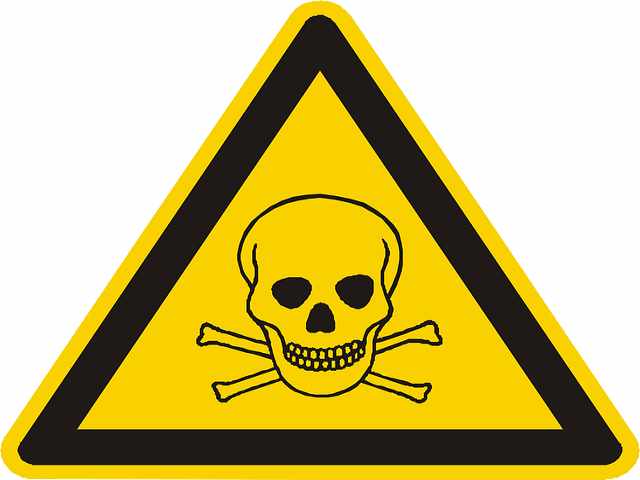
Deposit Mothballs
Mothballs are a type of poison that contains high concentrations of insect repellent. Long-term exposure to mothball fumes can harm pets and people. If a pet ingests mothballs the pet will need to visit a veterinarian. Little evidence exists to suggest that mothballs are effective for mole extermination but should a mole consume a mothball it will most certainly die. Mothballs MAY kill moles and reduce their reproductive rates, but at negligible levels and not without risk.
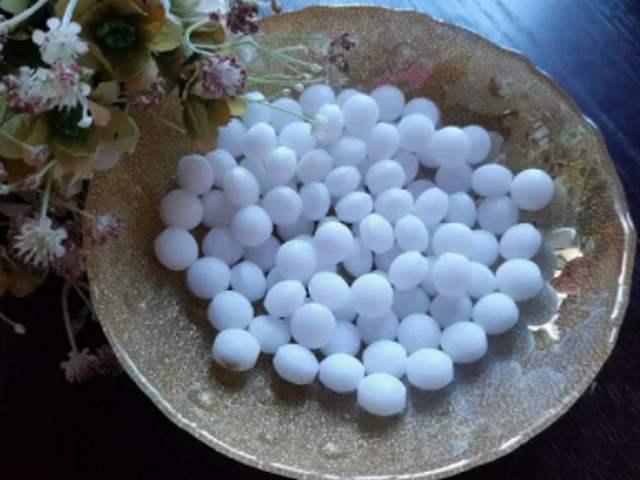
Put Down Chewing Gum Or Other Edibles
An old one that predates the internet is chewing gum – passed down from generation to generation and probably perpetuated by the folks at Wrigley! The technique involves taking the yellow wrapper off a piece of Juicy Fruit chewing gum and placing the aluminum foil wrapped gum within a mole tunnel. The moles are supposed to come along and eat the gum and aluminum foil causing them to die of digestive problems.
Remember, moles hunt by sound and smell. In other words, they prefer to eat things that are alive and wiggling near the surface of your yard. They really don’t chew gum! Bottom line is that moles don’t like to eat juicy fruit gum or any of the other edible things placed within their tunnel systems so these items do not fall into the category of the best way to get rid of a mole. Chewing gum or other edibles WILL NOT kill moles or reduce their reproductive rates.

Place Pet Waste Or Used Cat Litter
Some people will suggest repurposing pet waste or used cat litter by placing it in a mole tunnel. Little evidence exists to support this technique. We spend time in yards occupied by small terriers all the way up to Great Danes. The moles don’t seem to care about their excrement or urine. Used cat litter and pet waste can carry disease and would not be recommended around gardens or areas where children may congregate. Even if pet waste or used cat litter did work, it would take large volumes to cover an area and who wants to be handling all that poo? Pet waste or used cat litter WILL NOT kill moles or reduce their reproductive rates.
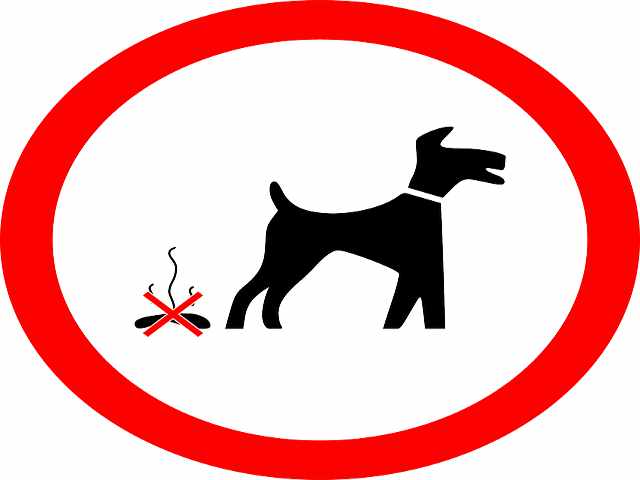
Locate Coffee Grounds
Some would say that the smell of coffee grounds will drive moles away. Just sprinkle used grounds in and around the mole tunnels. Although moles may not like the taste or smell of coffee grounds, grubs and worms do, and they form the main part of a mole’s diet. In other words, coffee grounds may backfire. Some of us will remember as kids sprinkling coffee grounds around to attract nightcrawlers for fishing. We would also use them to keep our bait alive and fresh. Possibly something to try, but in reality, you would need to drink a lot of coffee!
On a side note, in the fall, we often see large mole populations under or near walnut trees. When ripe and moist the outer walnut covering called the pericarp will leach juice into the soil. This juice will drive worms and nightcrawlers to the surface thus attracting moles. Coffee grounds WILL NOT kill moles or reduce their reproductive rates.

Flood Tunnel Systems
Everyone has a garden hose! Moles have very elaborate tunnel systems. The tunnels you see near the surface of your lawn are feeding tunnels. These tunnels are very absorbent and do not usually hold water. Any disruption to these tunnels will drive a mole to a much deeper network of tunnels. Tunnels move up and down, crisscross side to side, and often plunge 2-3 feet deep. If you can locate a deeper tunnel entrance, flooding can work, but remember, moles are excellent swimmers and have been avoiding floods for many years. If a mole should come bubbling up to the surface, you need to be prepared to quickly terminate it! On the flip side, adding water to your lawn may actually backfire by increasing the food supply – please see the Irrigation and Drainage section of our prior article titled, “How To Prevent Moles.” Flooding WILL kill moles and reduce their reproductive rates but at negligible levels.
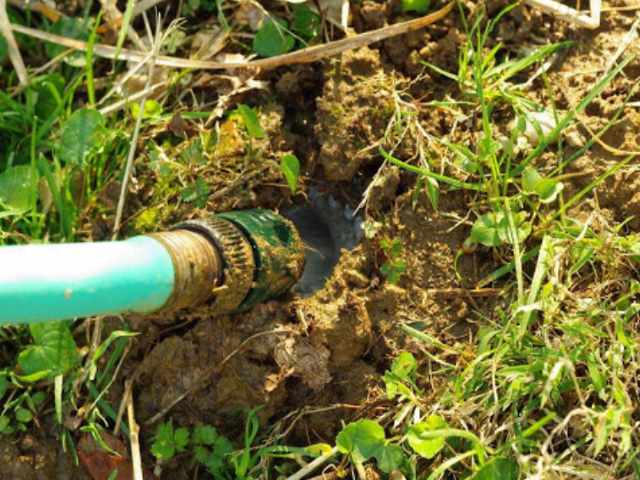
Smoke Bombs, Gassers, And Carbon Monoxide
Many of us remember the movie Caddyshack! For many adults, this classification of mole removal products is like candy to a kid! Who doesn’t like fire and smoke?
As described under flooding, mole tunnel networks are very extensive and usually not well defined. For any of these products to be effective at mole extermination, they have to reach the targeted animal. So, you need to locate and focus on a deeper tunnel entrance. Even then, in many Minneapolis-St Paul Metropolitan area cities, the soil is very soft and porous. In other words, any form of smoke or gas will usually dissipate before reaching the mole. Moles will often block a tunnel at the first sign of a foul odor and naturally exist in a low-oxygen environment. Accordingly, commercial carbon monoxide machines are ineffective for mole removal. There are also propane-based devices that ignite and blow up propane and oxygen within a tunnel system. For the reasons noted prior, they don’t generally work for moles and are dangerous in residential areas.
For this category of products, risks include; burns, explosions, fires, underground utility damage, carbon monoxide poisoning – all kidding aside, carbon monoxide a colorless, odorless, highly toxic gas and should never be used near a home (it can seep into a basement or lower level harming or killing the occupants). Smoke bombs, gassers, and carbon monoxide WILL kill moles and reduce their reproductive rates but at negligible levels and not without risk.

Position Ultrasonic Devices
In theory, ultrasonic mole repellents should work by taking advantage of the mole’s delicate sense of hearing. They are designed to annoy a mole into leaving your property. Many are solar-powered so in terms of ease of use you simply stick them in the ground.
Are you old enough to remember the pet rock? Made you feel good but didn’t really offer much in terms of value. We like to refer to ultrasonic devices as the “pet rock” of mole control. Metro Mole Control catches many moles tunneling within inches of ultrasonic devices. We also catch moles right next to noisy central air-conditioning units which cycle on and off all day long. In other words, even if ultrasonic devices do work, moles will quickly adapt to their presence, so it’s a temporary solution at best. We’re not big fans and are often scared more than the moles! Ultrasonic devices WILL NOT kill moles or reduce their reproductive rates.
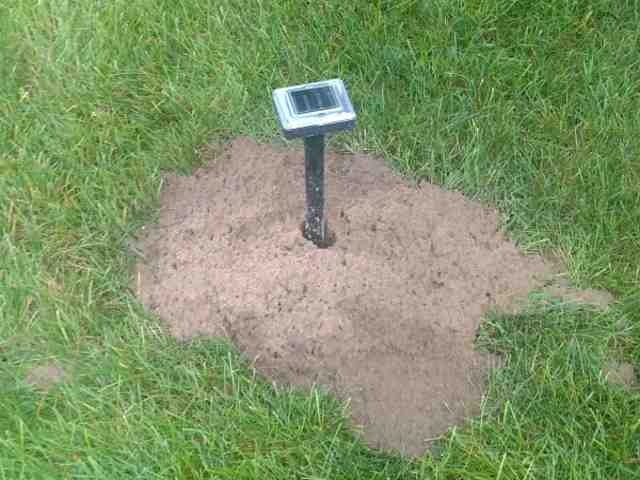
Introduce Predators
Natural mole predators include snakes, owls, hawks, foxes, and coyotes. Domesticated dogs and cats would also fall within the predator classification. For the most part, these predators don’t take many moles. A mole rarely comes out of the ground so in order for a predator to kill a mole it must first “see a mole.” Seeing a mole is not actually seeing the mole but seeing ground movement as the mole traverses a feeding tunnel. In order to catch the mole, a predator must penetrate the feeding tunnel to catch the mole. Easier said than done. We always say a hungry, clawed barn cat is the best predator. They generally have both the disposition and patience to capture an unsuspecting mole. Predators are somewhat effective and somewhat practical at mole extermination. Predators WILL kill moles and reduce their reproductive rates but at negligible levels.

Construct A Surface Barrier
Believe it or not, we have been involved in situations in Ham Lake, Fridley, and Ramsey that involved properties with a layer of class 5 (rock, sand, and clay) located just below the lawn. In one case, a driveway had been relocated from the front of the house to the side of the house. A layer of dirt and sod was placed just above class 5. They had no moles in this area. If you wish to do this, start with a 2-3 inch layer of compacted class 5. Place a 2-inch layer of topsoil down on top of that and then sod. Moles will not bother it. Very impractical for most, but if you find yourself in the right situation don’t tear up that class 5! Barriers WILL NOT kill moles or reduce their reproductive rates.

Permanent Exclusion
People often ask us how to permanently keep moles at bay, and exclusion is the only thing that’s 98% foolproof. First, you need to remove all the resident moles. In Minnesota, you need to dig a 1-foot wide x 3-foot deep trench around your property. From there, secure and place ¼ inch galvanized wire mesh within the trench. The mesh should have a 3 inch 90 degree outward bend at the bottom to deflect any moles tunneling downward. The mesh is then buried at the frost line around the property perimeter with a few inches exposed above ground.
Mesh barriers are impractical for most properties but can be cost-effective for smaller areas like gardens. Before doing any digging, always have underground utilities marked by calling 811. Permanent exclusion is very effective but very impractical. Permanent exclusion WILL NOT kill moles or reduce their reproductive rates.

Purchase A Different Home
An almost 100% foolproof option and certainly a best way to get rid of a mole; Relocating your residence to a mole-free area is perhaps the most effective option to consider. There are communities and neighborhoods within the Minneapolis-St Paul Metropolitan area with virtually no mole infestations. Extremely effective but impractical for most!

Trapping
At Metro Mole Control, we believe the most effective best way to get rid of a mole is physical removal by the means of trapping. This belief is shared by most experts in the country including university researchers, biologists, and extension specialists. Whether you do it yourself or hire a professional, a humanely trapped mole is verifiable deceased. In other words, he or she is never coming back to haunt you and will no longer be a part of the natural reproduction cycle.
There are many different types of mole traps that fall into many different categories including the harpoon, scissor, plunger, cinch, tunnel, box, choker, and barrel types. Many are not very “user friendly” and most require some degree of strength to properly set. Some are placed above ground and some are placed below ground. Some are dangerous and some are extremely family and pet-friendly. Depending on your specific soil conditions, some will perform better than others.
Above all, mole trapping is a learned skill that dictates expertise, technique, expense, and time. Don’t underestimate these requirements and always remember, the longer a mole problem exists, the more difficult it is to control. As a DIYer, a single mole caught here and there is often a recipe for disaster if you have a moderate to large population living in your yard. Trapping is undoubtedly the best overall mole extermination technique. Trapping WILL kill moles and reduce their reproductive rates.
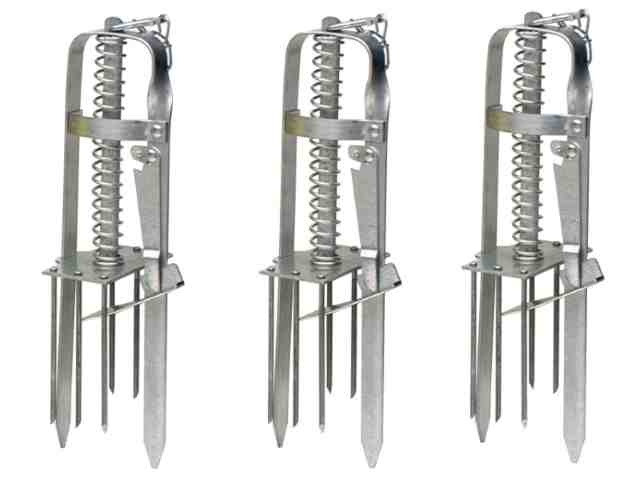
In Summary - The Best Way To Get Rid Of A Mole
In the aforementioned, we reviewed most of the available mole extermination and control options to get rid of a mole in Minnesota or for that matter anywhere in the country. These options did not involve the reduction or management of food, which was covered in a prior post. In practice, along with mole extermination and control, we should still pursue prevention and deterrence by managing food sources. However, to control the population, your ultimate goal should always be mole elimination.
Being mindful of safety, we always encourage homeowners to follow their own “best way to get rid of a mole” and do what “they feel works best” for their specific situation. In our opinion, some of the aforementioned options are practical and some not so practical. Some are effective and some not so effective. Some may even be harmful to children, pets, property, and the environment.
Moles are very complex by nature. Sometimes, positive results have been attributed to something which actually had little effect on the mole. Their response to habitat changes and food movement can lead to misinterpretation of activity. Sometimes the mere disruption of their tunnel by something unnatural causes a temporary withdrawal. In other words, you think they have left your property, when in fact they simply moved to a hidden area or a little deeper in the ground. In these cases, it’s not uncommon to experience an environment that exacerbates a mole problem by allowing them time to breed, multiply, and become more established.
If you’re struggling with a residential or commercial mole infestation in the Greater Minneapolis-St Paul Metropolitan area, it may be time for additional support. For a no-obligation estimate, please reach out to Metro Mole Control today. We are The Mole Control Experts in Minnesota!
Join Us On Our Social Media Sites!
